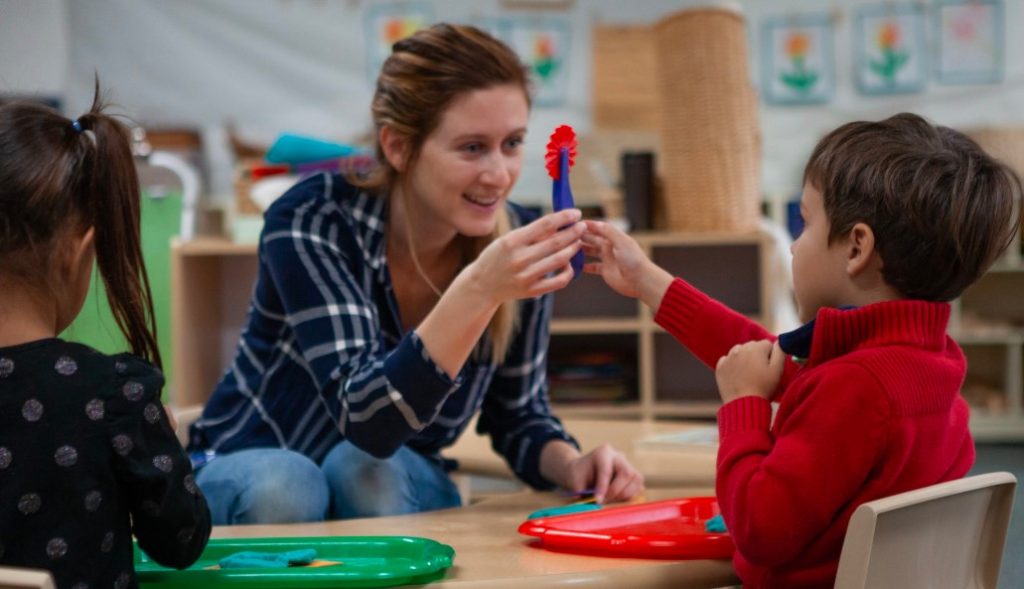While the concepts surrounding the treatments for autism might have a layered approach, Applied Behavior Analysis is often described as a gold standard. Applied Behavior Analysis, known as ABA, is a therapy for children with autism that emphasizes several socially beneficial behaviors. The main objectives of ABA are to promote the growth of new and existing skills, mold and develop, and lessen undesirable behaviors that have societal consequences. In other words, it develops useful new talents while reducing Principles of Applied Behavior Analysis (ABA).
Behavior analyses concentrate on the concepts that describe how learning occurs. The study of behavior analysis has produced numerous methods throughout the years for boosting positive behaviors and minimizing negative ones. Participants and the behavioral analyst interact one-on-one during ABA therapy sessions.
- The applied behavior principles are a component of the treatment known as applied behavior analysis.
- An ABA therapist carries out these principles through experimental behavior analysis.
- Specifically, the principles of classical and operant conditioning are the focus of ABA.
- ABA became a cornerstone of treatment for autism spectrum disorder since it focuses on early intervention in autism.
Types of Practices Under ABA
One of the characteristics of ABA treatment is the pursuit of specific and measurable goals. An ABA therapist and behavior analyst can develop an efficient intervention strategy for autistic children by considering all the purposes of behaviors.
- Discrete Trial Training (DTT)
DTT divides certain skills into smaller steps to cope with the condition. For example, when a child completes a task, they are rewarded with things like stickers, candy, access to a toy, etc. The therapist may ask the question again or provide an instructive suggestion if the response is invalid.
- Incidental Instruction
The reward-and-prompt strategy is significant in this method, like in DTT. Incidental training seeks to teach behaviors in the context of the child’s everyday life, such as during recess at school or dinner at home. In contrast to DTT, in incidental training, parents and instructors can carry out outside a treatment office.
Incidental training teaches skills through natural opportunities. For instance, a girl might ask her teacher for a ball during playtime. It is an excellent opportunity for the teacher to introduce conversational skills. He may inquire who it is and which ball they like. The teacher would reward the girl with that ball if she went into more detail and specified the color.
- Critical Response Therapy (PRT)
PRT emphasizes broad abilities like taking turns or starting conversations rather than teaching a specific task. These pivotal abilities create the foundation for a wide range of social actions. Therefore, they can aid children in learning a variety of activities. Parents frequently observe improvement in several other areas when a youngster masters a crucial skill.
- Early Start Denver Model (ESDM)
ESDM is one of the most recent ABA variants. It might be game-based or take place in a more conventional instructional setting. An expert in ESDM will attempt to teach numerous abilities throughout the same exercise, unlike discrete trial training.
A therapist may instruct a child in DTT to place a square block inside an open box. The therapist can instruct the child to place the square block in a zipped-up bag during ESDM. The child would learn about shapes through this activity while developing the motor skills required to open a bag’s zipper. Although teaching several skills at once might be challenging, some therapists think the approach is more effective. Learn more about our In-Home Child ABA Therapy in South Florida.

The Seven Dimensions of Applied Behavior Analysis
The seven ABA aspects by Baer, Wolf, and Risley must be applied, behavioral, analytical, technical, theoretically systematic, efficient, and adept to generality to be complete and successful. Knowing and comprehending these seven characteristics is essential to understanding the field of ABA, whether you are a parent, carer, teacher, or someone simply interested in learning more.
- Applied
The phrase applied in behavioral analysis demonstrates ABA’s dedication to changing habits in ways that enhance and improve people’s lives. BCBAs ( Board Certified Behavior Analysts) must choose relevant and socially significant behaviors for the learner when selecting goals and treatments to target.
Since every child is unique, the goals chosen must be tailored and relevant to that learner. Aiming for adaptive, intellectual, social, communication, or recreational abilities might be a socially significant objective.
- Analytic
The specialist only chooses therapies created through evidence-based research. It implies that the BCBA creating the intervention plan uses data from scientific research and other reliable sources. None of the objectives or interventions chosen are subjectivity-based and chosen at random. Practitioners may make the most informed choices regarding which treatments to put into practice and which ones need to be generalized and maintained by relying on scientific evidence.
- Technological
Technology characterizes each step of the intervention programs. Any interventionist carrying out the intervention plan should be able to understand them since they are laid out clearly and succinctly. It is not technological if a procedure’s instructions are complicated to understand or open to multiple interpretations.
- Conceptually Systematic
Comparable to analytical, conceptually systematic refers to applying research-based teaching strategies and procedures by all practitioners. Positive reinforcement, prompting, modeling, and extinction are common teaching strategies in sessions and interventions.
- Effective
A successful intervention alters the learner’s behavior and lessens their problematic behavior significantly and practically. It is never the learner’s fault if they do not achieve their goals. The treatment plan should be stopped, and a new intervention should be tried if an intervention is deemed ineffective. The BCBA can determine if an intervention is effective or ineffective by examining the data.
- Generality
If a behavior can be sustained over time, emerges in several settings and environments, and encompasses a variety of related behaviors, it is said to have generality. The intended behaviors should never be transient. For instance, if children can control their problematic conduct in a therapeutic context, they should be able to generalize that behavior to their home and school environments. The modified behavior ought to be able to apply to other unintended behaviors.
- Behavior
All people can see overt behaviors, whereas none can see hidden ones. Behavior is composed of three basic elements within ABA. Before changing the behavior in question, there must be a need to do so. The ability to observe and measure the behavior is also essential. When a shift in behavior happens, an analysis determines what caused it.
Can Parents Implement ABA themselves at Home?
Long-term symptom reduction is possible with some parent-mediated therapies. The best part is that these therapies develop stronger bonds between parents and children. Therefore, many parents can begin these therapies through reading, viewing films, or enrolling in online or live classes. While they gain confidence in taking charge, some parents opt to work with a licensed therapist. Even if parents opt to work with a therapist, they can still develop their abilities while reducing the cost of therapy by teaching their child therapy outside of scheduled sessions.
Since ABA is a science, its goal is to improve learners’ lives by tailoring instruction to the skills they need to succeed in their current and future situations. The fundamental ideas behind ABA therapy aim to transform problematic behaviors into more useful and acceptable ones gradually. Thus, there is no reason why success and advancement cannot be accomplished if all seven conditions are met.










